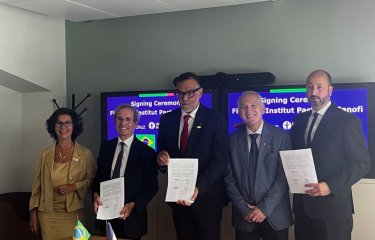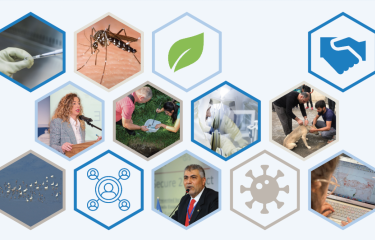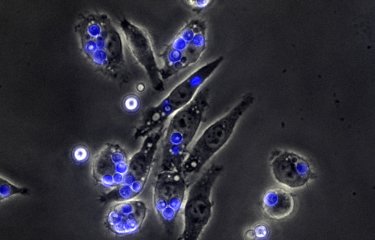Leptospirosis is a re-emerging zoonosis that affects over one million people and is responsible for nearly 60,000 deaths each year worldwide. This disease transmitted to humans via freshwater contaminated with bacteria of the genus Leptospira has a record incidence in Oceania. A group of researchers from the Institut Pasteur International Network coordinated by the Institut Pasteur de Nouvelle Calédonie has just described 12 new species of the genus Leptospira.
Researchers from the unit Research and Expertise on Leptospirosis, headed by Cyrille Goarant, at the Institut Pasteur de Nouvelle Calédonie focused on the environmental diversity of leptospira and isolated these bacteria from soil samples from hotspots in New Caledonia. Thanks to a collaboration with the Unit of Biology of Spirochetes led by Mathieu Picardeau at the Institut Pasteur in Paris, the complete genomes of these isolates could be determined unsing the PIBnet platform1. At the Institut Pasteur de Montevideo, the unit of bioinformatics led by Gregorio Iraola then conducted an extensive analysis of these genomes, including a comparison with genomes of Leptospira already available in databases. These analyzes showed the presence of 12 new species in each of the 3 clusters of the Leptospira genus (3 pathogens, 5 intermediates and 4 saprophytes), revealing an unexpected biodiversity of leptospires in soils. This unknown biodiversity and revealed abundance suggest that soils are the original habitat of the Leptospira genus. In parallel, experiments in animal models suggest that the 3 new pathogenic species, as well as one already described after its isolation in soils from Malaysia (Leptospira kmetyi, also found in New Caledonia in this study), do not present a virulent phenotype. The detailed analysis of the accessory genome of the Leptospira genus extended to these new species illuminates the genetic repertoire and the evolution towards virulence in this complex bacterial genus, suggesting in particular that the virulence was acquired independently in the "pathogenic" and "intermediate" clusters".
This work, which has just been published in the journal Microbial Genomics, provides new information on the evolution of virulence within the genus Leptospira, but also lays the foundation for a redefinition of the classification of pathogenic species. They illustrate both the importance of the presence of Institut Pasteur International Network members in hyper-endemic areas and the need for collaboration between teams with complementary expertise within this network.
(1) Pasteur International Bioresources network
Source: Roman Thibeaux; Gregorio Iraola; Ignacio Ferrés; Emilie Bierque; Dominique Girault; Marie-Estelle Soupé-Gilbert; Mathieu Picardeau; Cyrille Goarant. Deciphering the unexplored Leptospira diversity from soils uncovers genomic evolution to virulence. Microbial Genomics, 03 January 2018 doi: 10.1099/mgen.0.000144






